When I throw a dinner party, the turophile in me demands a cheese course be served with a lightly dressed salad. The cheese settles to room temperature as dinner progresses while a simple vinaigrette sits blended in the bottom of a bowl under naked greens until it’s time to be tossed, and the combination hits the table after the main course but before dessert.
Juxtapose the vinegar, mustard, minced shallot, salt, pepper and oil used to make a classic French vinaigrette with the ingredient list on the label of the Hidden Valley Ranch dressing bottle sitting in my fridge. The vegetable oil, egg yolk and buttermilk are actual foods, and both cooks and neuroscientists understand the appeal of the salt and sugar in the mix.
The chemical reaction of the xanthan gum and modified food starch is evident in the dressing’s gooey, white flow. MSG heightens the taste and my family has no allergic reactions to it. There are four preservatives in the recipe to make it shelf stable and the two disodiums contribute to the fact that 2 tablespoons contain 11 percent of an eater’s recommended daily sodium allowance.
Commercial ranch dressing is more guilty pleasure than pantry staple for us. My daughter dips her vegetables in it for calories and my son uses it to cool his palate during hot sauce exploration exercises. I buy it occasionally because I’ve never successfully replicated it in my own kitchen. Nor have I been able to find a suitable (according to my kids) replacement among the exploding options of organic, non-GMO, preservative-lite dressings in the grocery story refrigerator case.
To counterbalance my contribution to the $2 billion salad dressing market (and six plastic bottles added to the recycling pile annually), I make sure the vast majority of my hot and cold salads are dolled up with combinations of ingredients I already have on hand, stored in reusable glass jars for up to a week in the fridge, devoid of highly processed oils and chemicals, and mixed by hand.
Choosing the right dressing for any salad is a science, according to J. Kenji Lopez-Alt in his 958-page opus, “The Food Lab: Better Home Cooking Through Science.”
He takes 60 of those pages to explain the three families of dressings and how to pair them.
Vinaigrettes (forced mixtures of three parts oil, one part acid and 1/3 part emulsifying agent like mustard or honey that help keep the acid suspended in the oil) are your best bet for simple salads, whether they comprise fresh greens, crunchy colorful slaws (see recipe) or blanched green vegetables. Lopez-Alt explains that going through the trouble to slowly whisk the oil into the vinegar drop by drop to create an emulsion keeps the oil from making the greens soggy.
Mayonnaise-based dressings begin with a raw egg-yolk emulsion and are thicker, creamier and more stable. They require hardier elements in the salad mix, think classic American potato or trendy kale Caesar.
Dairy-based dressings start with a bacterially thickened product like sour cream or buttermilk to which all the other flavors get added. Lopez-Alt saves these for either the classic blue cheese iceberg wedge, Greek chopped salads where all the disparate parts get a light coating of the stuff, or for dipping, like with ranch, for which he does offer up a recipe. It’s good, but it’s no Hidden Valley, which in the end, is probably a good thing.
SHREDDED CABBAGE SLAW WITH SWEET AND SOUR DRESSING
Given the titles of her earlier cookbooks, I should arguably be looking to Nigella Lawson (“How to be a Domestic Goddess”) for a buttermilk-based green goddess dressing, but it is January and this slaw serves as both satisfying lunch and a great counter to a wintertime braised pork shoulder. The recipe makes a big salad, but it keeps, undressed, in the refrigerator for three days if you can’t eat it all at once.
Serves 10 to 12
FOR SALAD:
1 medium red cabbage (about 1 1/2 pounds), shredded
6 scallions, trimmed and thinly sliced
1 red pepper, deseeded and thinly sliced
1 yellow pepper, deseeded and thinly sliced 1 orange pepper, deseeded and thinly sliced
1 serrano chili, deseeded and minced
FOR DRESSING:
¼ cup chopped cilantro, plus 2 tablespoons for garnish
1 cup pineapple juice
Zest of 1 lime and ¼ cup lime juice
2 teaspoons toasted sesame oil
2 teaspoons maple syrup
1 teaspoon sea salt
To make the salad, combine vegetables in a large bowl.
To make the dressing, combine 1/4 cup cilantro, pineapple juice, lime zest and juice, sesame oil, maple syrup and salt in a glass jar. Give it a good shake to combine.
Pour the dressing over the slaw. Toss to mix and let stand for at least 15 minutes or up to 2 hours, before serving.
Sprinkle the remaining 2 tablespoons cilantro over the finished slaw.
Christine Burns Rudalevige is a food writer, recipe developer and tester, and cooking teacher in Brunswick. She writes about feeding her family Maine seafood at familyfish.net. Contact her at cburns1227@gmail.com.
Send questions/comments to the editors.

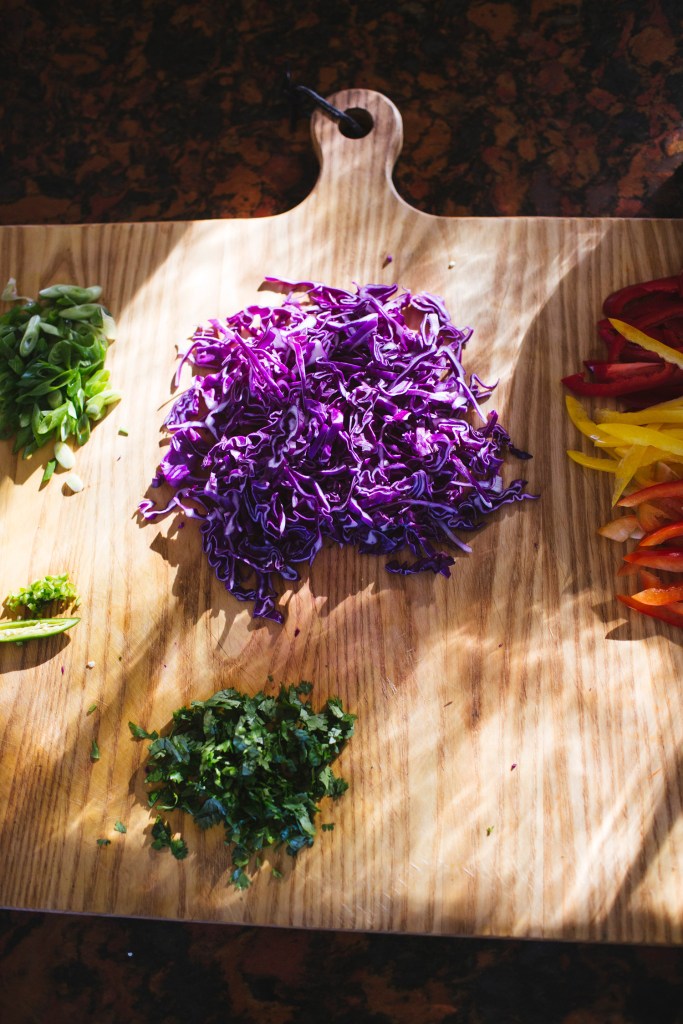
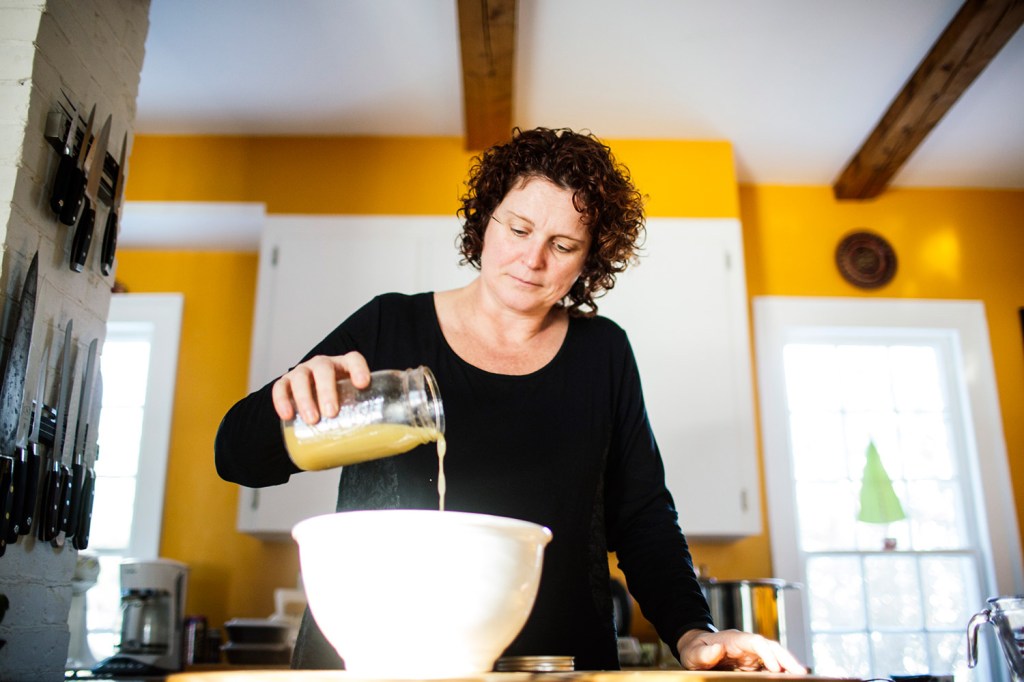
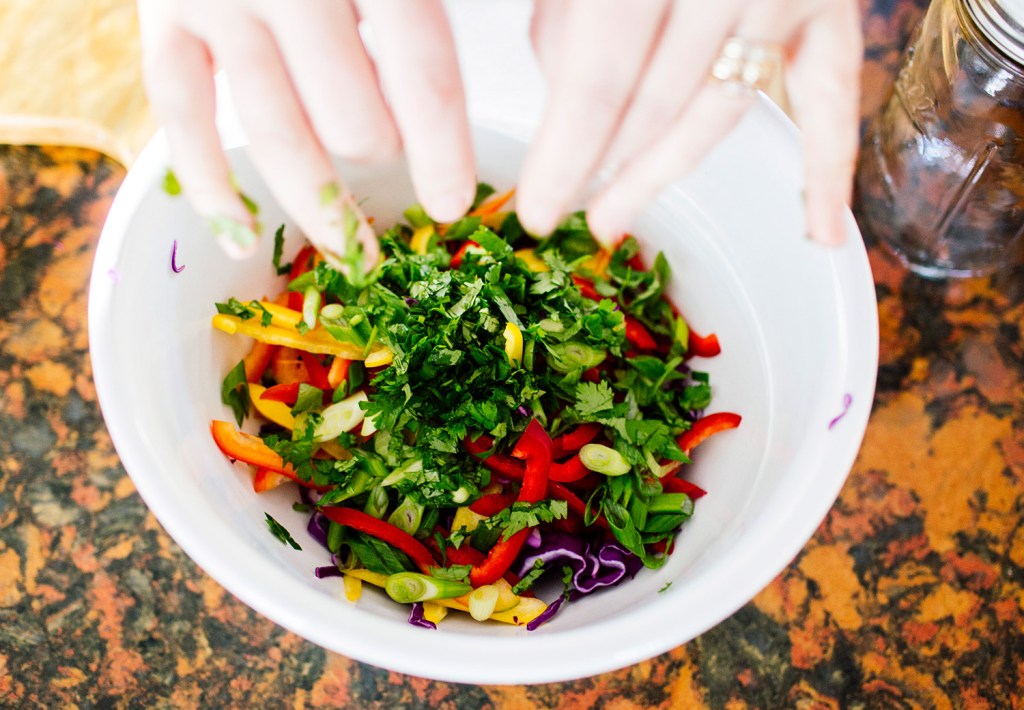
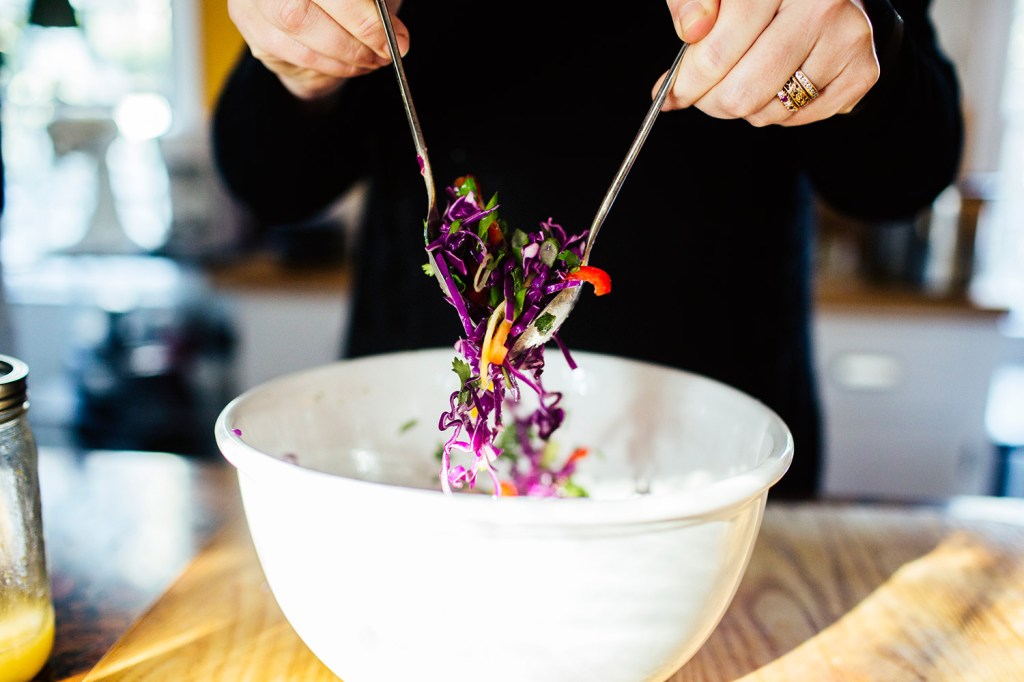
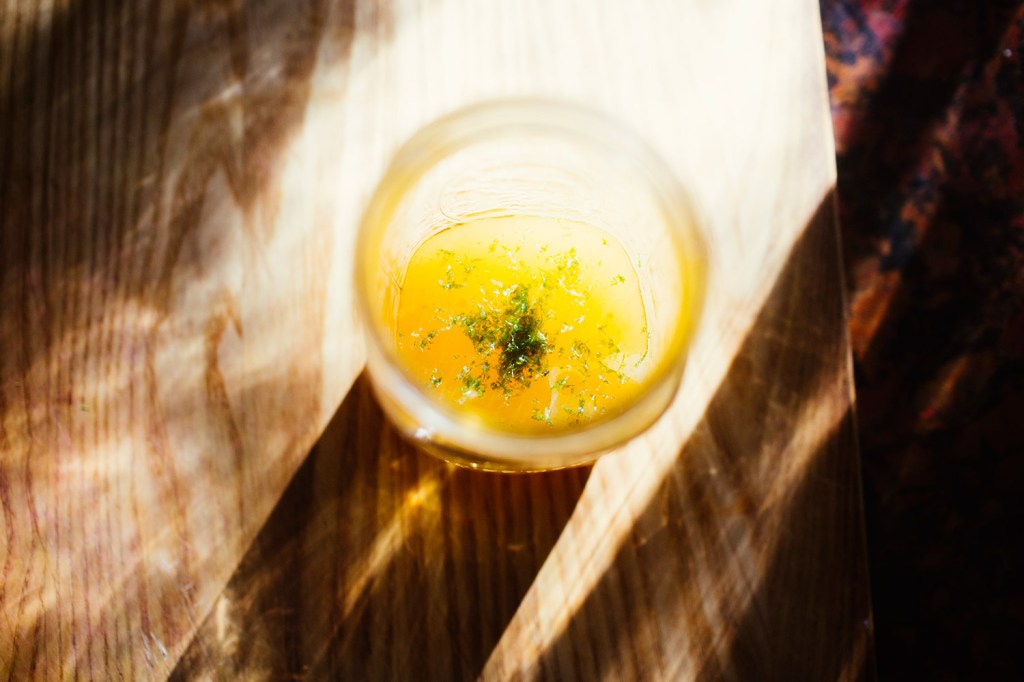
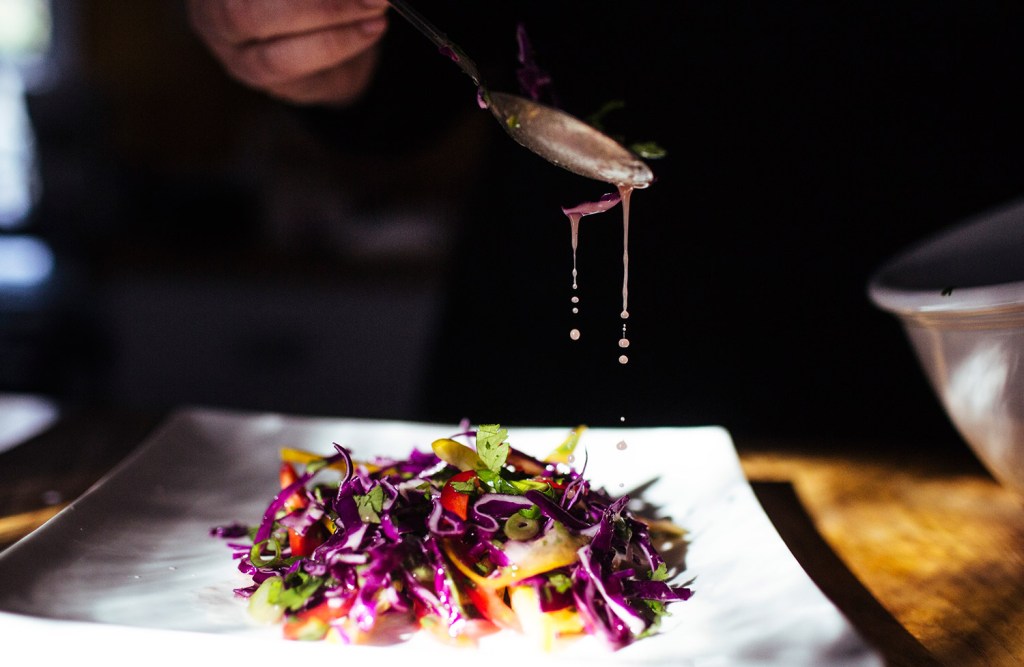
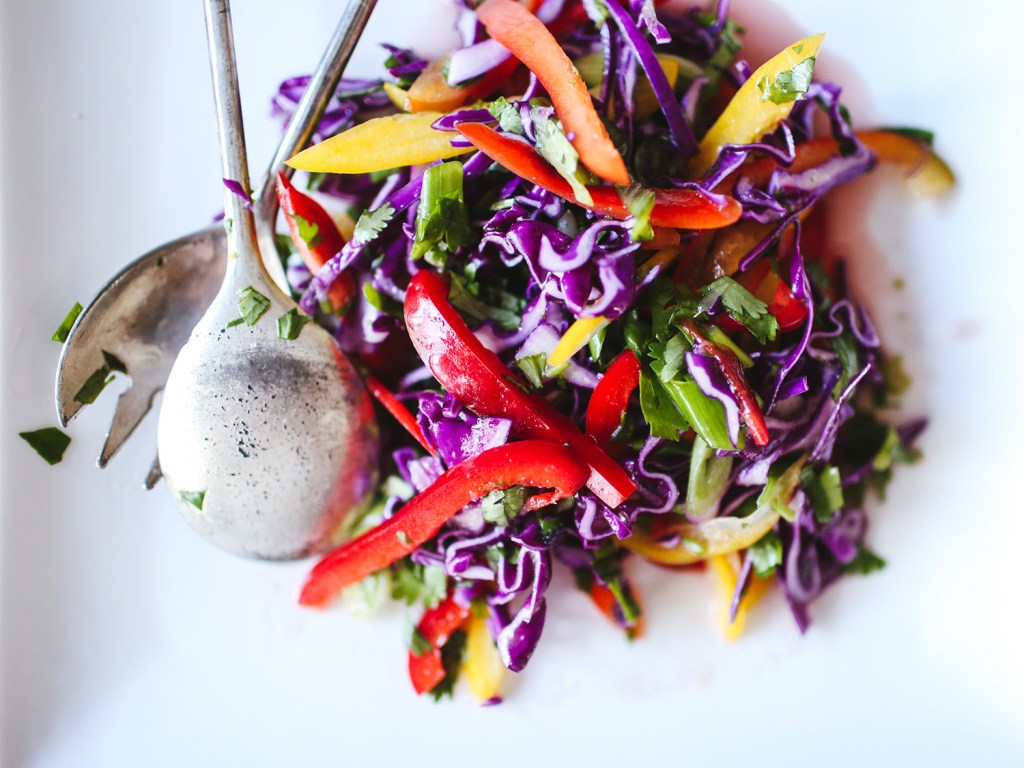

Success. Please wait for the page to reload. If the page does not reload within 5 seconds, please refresh the page.
Enter your email and password to access comments.
Hi, to comment on stories you must . This profile is in addition to your subscription and website login.
Already have a commenting profile? .
Invalid username/password.
Please check your email to confirm and complete your registration.
Only subscribers are eligible to post comments. Please subscribe or login first for digital access. Here’s why.
Use the form below to reset your password. When you've submitted your account email, we will send an email with a reset code.